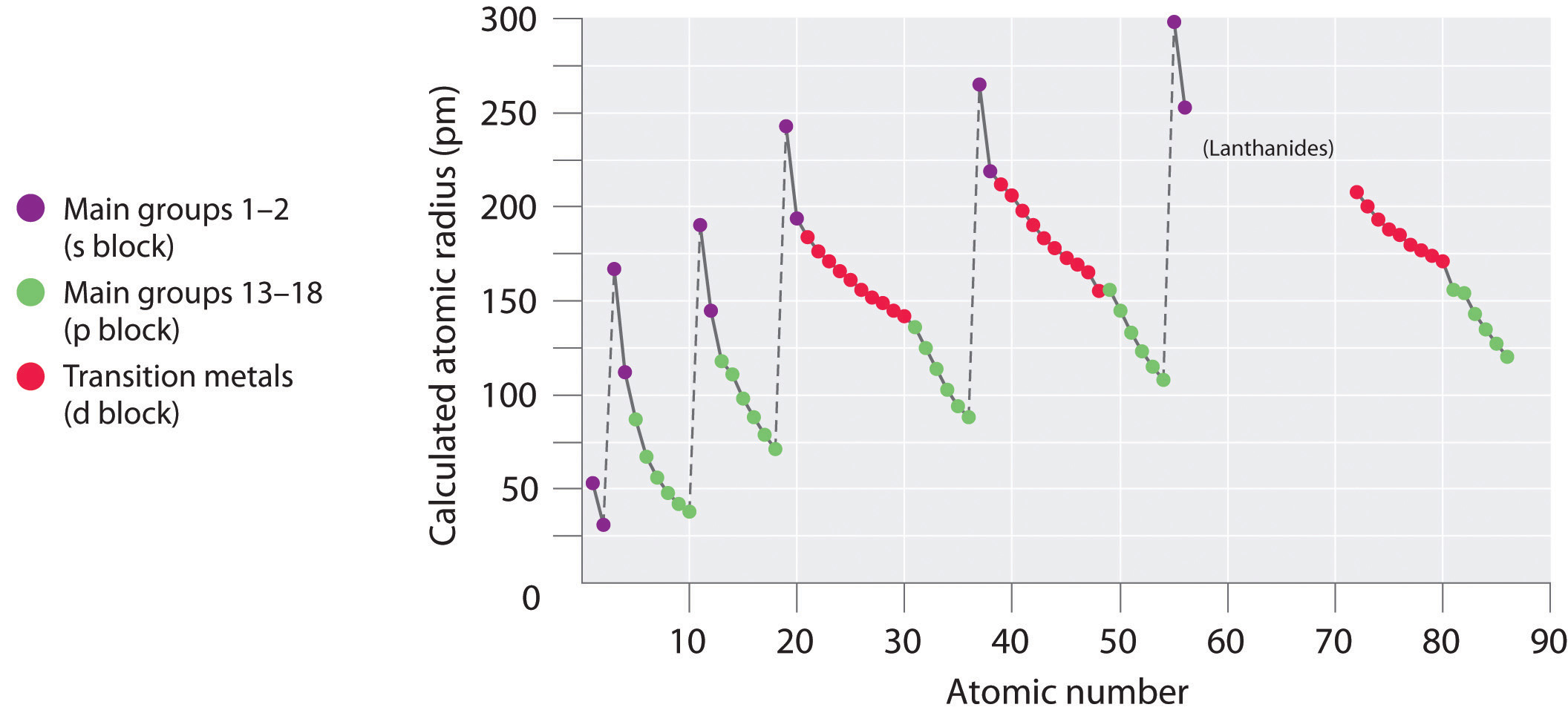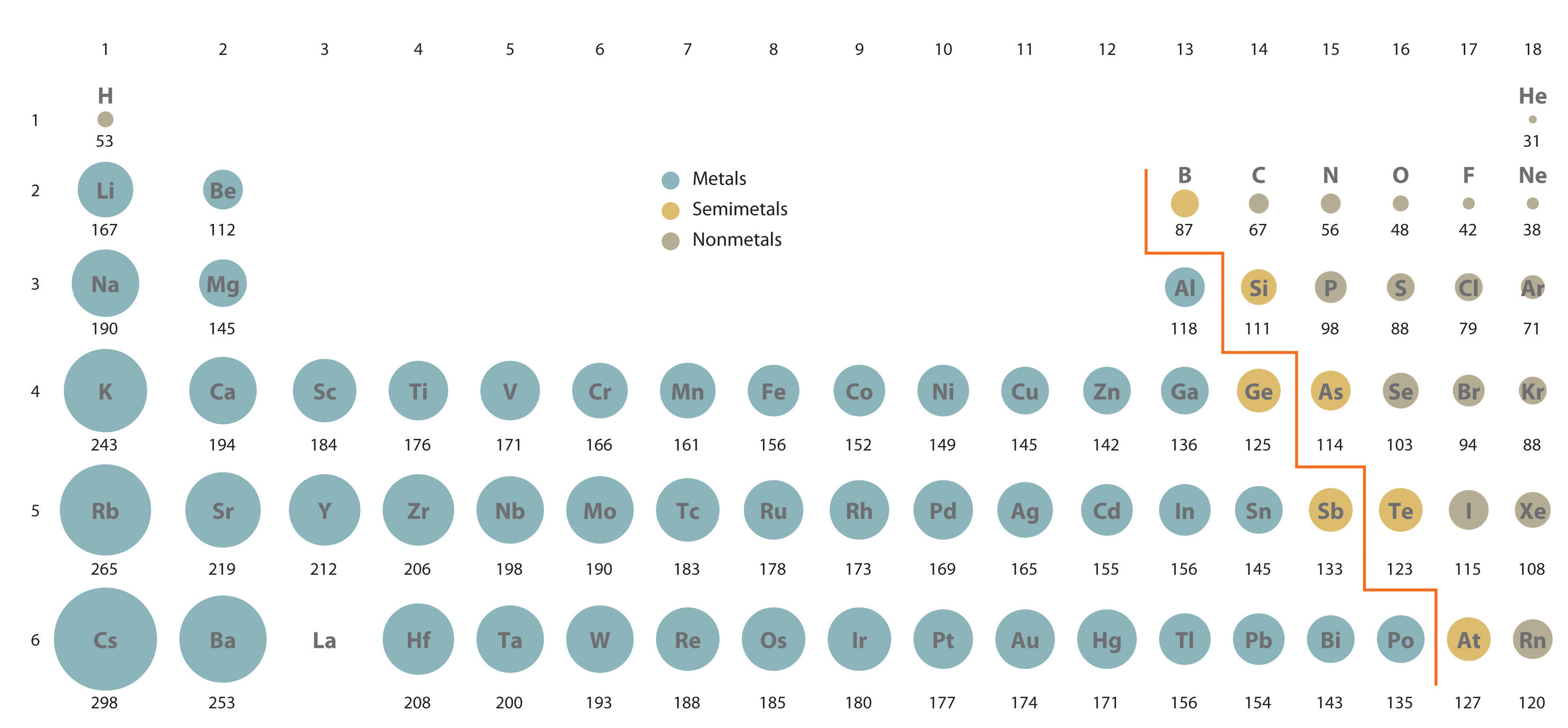How does the number of protons relate to atomic size?
1 Answer
This trend is most apparent when restricted to a row on the periodic table. As you move to the right, the atomic number increases, meaning the number of protons increases. In addition, the number of electrons increases. However, because the mass of the proton is about 1836 times the mass of the electron, the strong nuclear force that attracts them is significant, shrinking the atomic radius.
So, in general, the atomic radius shrinks as the atomic number increases across a single row, except when you get to the noble gas. The noble gas already has a full valence and is stable.
The trend stops at the end of the row, and starts over at a radius slightly larger than the first atom in the previous row. As you go down a column, there is one more energy level to incorporate into the atomic radius (the quantum number n increases by 1), which increases the atomic radius.
So, Cl is smaller than S, while K is larger than Na. This is all in pm.



